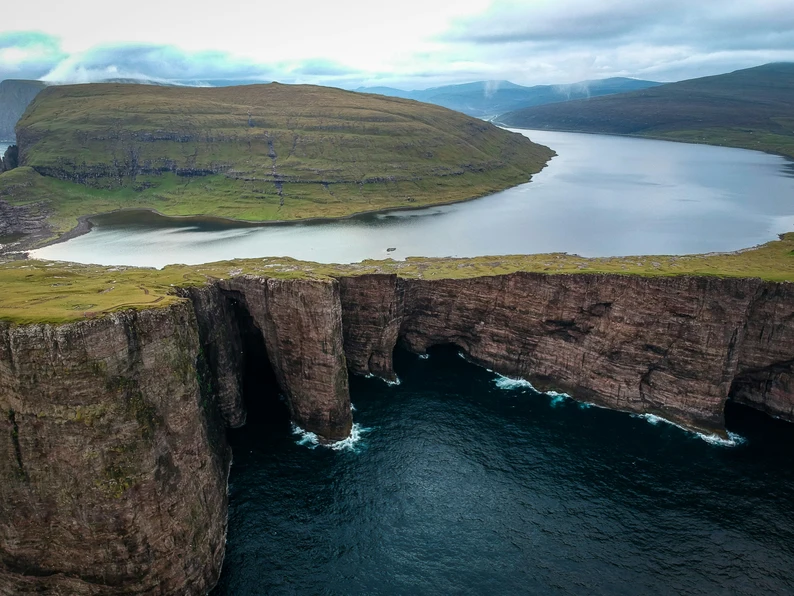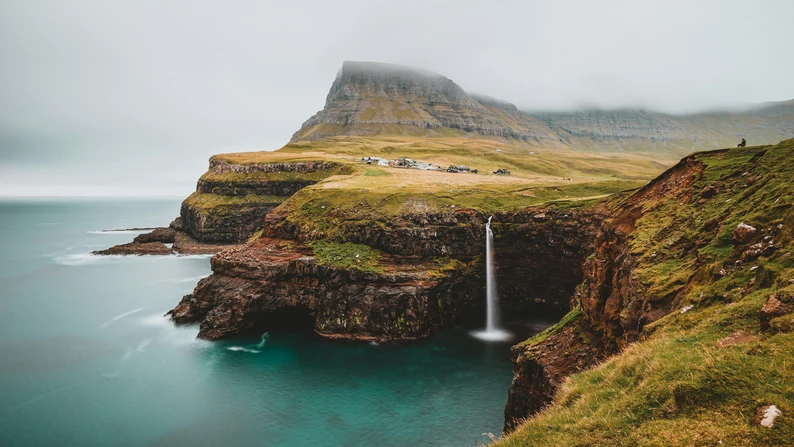Dreaming of Faroe Islands: A Photography Expedition to the Enigmatic Isles
The Faroe Islands, a remote archipelago located in the North Atlantic Ocean, have long been a source of fascination for photography enthusiasts.
Apr · 2024

Photo by Tomáš Malík on Unsplash
The Faroe Islands, a remote archipelago located in the North Atlantic Ocean, have long been a source of fascination for photography enthusiasts. With its rugged landscapes, dramatic cliffs, and picturesque villages, the Faroe Islands offer a wealth of opportunities for capturing stunning images. But it’s not just the natural beauty that makes this destination so captivating. The islands are also steeped in folklore and mystery, adding an extra layer of intrigue to any photography expedition.
Key Takeaways
- The Faroe Islands are a remote and enigmatic destination with stunning natural beauty and rich folklore.
- Planning a photography expedition to the Faroe Islands requires careful consideration of weather, transportation, and equipment.
- To capture the beauty of the Faroe Islands, photographers should focus on the unique landscapes, dramatic lighting, and changing weather conditions.
- Exploring the remote islands of the Faroe archipelago offers opportunities to discover hidden gems and experience the local culture and traditions.
- The Faroe Islands offer a gastronomic journey with traditional dishes featuring local ingredients like lamb, fish, and seaweed.
The Faroe Islands: A Brief Overview
The Faroe Islands consist of 18 volcanic islands, situated between Iceland and Norway. Despite their small size, the islands boast a rich history and unique culture. The first settlers arrived in the 9th century, and the islands have been inhabited ever since. Today, the population stands at around 50,000 people, with the majority speaking Faroese, a language derived from Old Norse.
The currency used in the Faroe Islands is the Faroese króna, although Danish krone is also widely accepted. The islands are an autonomous territory within the Kingdom of Denmark, but they have their own government and make many decisions independently.
Planning a Photography Expedition to Faroe Islands
When planning a photography expedition to the Faroe Islands, it’s important to consider the best time to visit. The islands experience a mild oceanic climate, with cool summers and mild winters. The summer months of June to August offer long daylight hours and lush green landscapes, making it an ideal time for photography. However, this is also the peak tourist season, so be prepared for larger crowds.
To reach the Faroe Islands, you can fly from various European cities such as Copenhagen or Reykjavik. It’s recommended to book your flights well in advance to secure the best deals. Accommodation options on the islands range from hotels to guesthouses and even traditional Faroese homes. It’s advisable to book your accommodation in advance, especially during the summer months.
Transportation on the islands can be challenging, as public transportation is limited. Renting a car is the most convenient option for exploring the islands and reaching remote locations. However, be prepared for narrow and winding roads, as well as changing weather conditions.
Capturing the Beauty of Faroe Islands: Tips and Techniques
The Faroe Islands offer a plethora of opportunities for capturing breathtaking images. From the dramatic cliffs of Vestmanna to the cascading waterfalls of Gásadalur, there is no shortage of stunning landscapes and seascapes to photograph.
When it comes to camera gear, a wide-angle lens is essential for capturing the vastness of the landscapes. A tripod is also recommended for long exposure shots, especially when photographing waterfalls or capturing the movement of the ocean. Additionally, a polarizing filter can help enhance colors and reduce glare.
The lighting conditions in the Faroe Islands can be challenging, with frequent changes in weather and cloud cover. It’s important to be patient and wait for the right moment to capture the perfect shot. The islands are known for their dramatic skies, so don’t be afraid to experiment with different compositions and angles to capture the mood of the landscape.
The Enigmatic Isles: Mysterious Legends and Folklore
The Faroe Islands are not only known for their natural beauty but also for their rich folklore and mysterious legends. These stories have been passed down through generations and play a significant role in the local culture.
One of the most famous legends is that of the Huldufólk, or hidden people. According to folklore, these supernatural beings live in rocks and hills and are invisible to humans unless they choose to reveal themselves. Many locals believe in their existence and take great care not to disturb their homes.
Another intriguing legend is that of the Selkies, mythical creatures that can transform from seals into humans. It is said that if a human manages to steal a Selkie’s skin, they can force the Selkie to become their spouse. These stories add an air of mystery and enchantment to the already captivating landscape of the Faroe Islands.
Exploring the Remote Islands of Faroe

While the main islands of the Faroe Islands offer plenty of photographic opportunities, it’s the remote and less-visited islands that truly capture the imagination. These islands, such as Mykines and Suðuroy, offer a sense of isolation and untouched beauty that is hard to find elsewhere.
Exploring these remote islands can be challenging, as they are often only accessible by ferry or helicopter. However, the rewards are well worth the effort. From the puffin colonies of Mykines to the rugged cliffs of Suðuroy, these islands offer a unique perspective on the natural wonders of the Faroe Islands.
A Photographer’s Paradise: Faroe Islands’ Natural Wonders
The Faroe Islands are home to a multitude of natural wonders that are a photographer’s dream. From towering waterfalls to dramatic sea cliffs, there is no shortage of breathtaking landscapes to capture.
One of the most iconic sights in the Faroe Islands is the Mulafossur waterfall in Gásadalur. This waterfall cascades directly into the ocean, creating a stunning visual spectacle. To capture this natural wonder, it’s best to visit during high tide when the waterfall is at its most powerful.
The sea cliffs of Vestmanna are another must-visit location for photographers. These towering cliffs rise dramatically from the ocean and are home to numerous seabird colonies. Taking a boat tour around these cliffs offers a unique perspective and allows for incredible photo opportunities.
Meeting the Locals: Culture and Traditions of Faroe Islands
One of the highlights of any photography expedition to the Faroe Islands is the opportunity to meet and interact with the locals. The Faroese people are known for their warm hospitality and strong sense of community.
During your visit, take the time to learn about the local culture and traditions. Attend a traditional Faroese dance performance or visit a local museum to gain a deeper understanding of the island’s history. Engaging with the locals will not only enrich your experience but also provide unique photo opportunities.
Faroe Islands: A Gastronomic Journey
No trip to the Faroe Islands would be complete without indulging in the unique cuisine of the islands. The Faroese cuisine is heavily influenced by its natural surroundings, with a focus on seafood and traditional dishes.
One of the most famous dishes in the Faroe Islands is ræst kjøt, which is fermented lamb meat. This traditional method of preservation dates back centuries and results in a unique and flavorful dish. Other popular dishes include salted fish, dried fish, and fish soup.
For a truly authentic culinary experience, consider visiting one of the local restaurants or attending a traditional Faroese feast known as a kaffimat. These feasts typically feature an array of traditional dishes and provide an opportunity to immerse yourself in the local culture.
Memories to Cherish Forever
A photography expedition to the Faroe Islands is an experience that will stay with you forever. From capturing stunning landscapes to immersing yourself in local culture, this destination offers endless opportunities for exploration and discovery.
Whether you’re a professional photographer or simply enjoy capturing beautiful moments, the Faroe Islands will not disappoint. Its enigmatic allure, rich folklore, and breathtaking natural beauty make it a truly captivating destination for photography enthusiasts. So pack your camera gear, book your flights, and get ready for an unforgettable adventure in the Faroe Islands.
If you’re a photographer, you know how important it is for clients to respect your time. In this insightful article, “The Consequences of Clients Not Respecting a Photographer’s Time: Strategies for Managing the Impact on Business and Well-being,” you’ll discover effective strategies to deal with this common issue and maintain a healthy work-life balance. As you plan your next photography expedition, it’s also crucial to consider the visual aspects of your website. Check out “Picking the Right Color Palette for Web Design” to learn how to create an appealing and cohesive online presence. Additionally, if you’re looking for ways to monetize your photography website beyond ads, “Beyond Ads: The Advantages of Finding Sponsorship for Your Photography Website” offers valuable insights into the benefits of securing sponsorships.
FAQs
What are the Faroe Islands?
The Faroe Islands are a group of 18 islands located in the North Atlantic Ocean, between Iceland and Norway. They are an autonomous territory of Denmark.
What is the climate like in the Faroe Islands?
The climate in the Faroe Islands is oceanic, with mild winters and cool summers. It is often cloudy, rainy, and windy, with frequent fog.
What is the best time to visit the Faroe Islands?
The best time to visit the Faroe Islands is from May to September, when the weather is milder and there are longer daylight hours. However, the weather can be unpredictable and it is recommended to bring warm and waterproof clothing.
What is the currency used in the Faroe Islands?
The currency used in the Faroe Islands is the Faroese króna (FOK). However, Danish krone (DKK) is also widely accepted.
What language is spoken in the Faroe Islands?
The official language of the Faroe Islands is Faroese, which is closely related to Icelandic and Norwegian. Danish is also widely spoken and understood.
What is the main industry in the Faroe Islands?
The main industry in the Faroe Islands is fishing, particularly of salmon and herring. Tourism is also a growing industry.
Do I need a visa to visit the Faroe Islands?
If you are a citizen of a Nordic country or a member of the European Union, you do not need a visa to visit the Faroe Islands. Citizens of other countries may need a visa, depending on their nationality and the length of their stay. It is recommended to check with the Faroese authorities or your local embassy for more information.









Add your first comment to this post